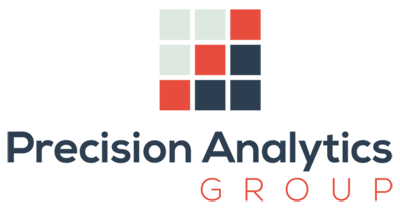The majority of firms and organizations have very few employees who can comprehend and evaluate data. In some cases, many employees are simply intimidated by their data whether it be the sheer volume of it or the complexity of it. Data literacy is a skill that is appreciated and required across all departments, industries, and levels of seniority, making an analytics profession potentially lucrative for people from many walks of life.
Whether your career is just getting started or you’re seeking to switch to something new, one question that almost everyone who is interested in pursuing an analytics profession has is: How can I get into analytics?
How Analytical Are You?
One thing I always say to people who want to enter the analytical world is that you already use analytics in your day-to-day. You just have not put a fancy title on it. For example, when is a good time to go grocery shopping at Costco. One might say never. However, for the purposes of this discussion let’s dig deeper into this. You have noticed that the parking lots are full on the weekends. The lines inside are much longer. All of this means a longer more painful shopping experience. How do you fix this? You decide to do your shopping on a Tuesday when it is much less busy. You came to this decision by accumulating the data from previous experiences and making a more educated decision the next time. That is analytics concisely. Let’s take the aforementioned example and break it down.
Focusing on the routine statistics and figures in your life can help you get some practice if you haven’t had much experience dealing with data or applying it to draw conclusions. When you next voice an opinion in a group setting at work or with friends, consider these questions:
- What sources am I using to get this information?
- What statistics back up my assertion?
- What data refute my assertion?
In this case, your sources of information are your and your family’s personal experiences. Your statistics to back up these assertion can be measured by the time it takes to perform the entire shopping experience. The last question is if there was anything that can refute the idea of shopping midweek based on the data you have. This sounds very elaborate, but you are doing it subconsciously. Are you prepared to do this kind of problem solving and analysis for a career?
Understand the Basic Analytic Concepts
Regardless of the business, it is vital to have certain skills. These include communication, organization, project management, leadership, and critical thinking. You will also need to gain the technical skills required for the work in addition to those soft talents.
Data analytics is the process of examining, cleaning, transforming, and modeling data with the goal of discovering useful information, suggesting conclusions, and supporting decision-making.
There are several key concepts in data analytics, including:
- Data Cleansing: This involves identifying and correcting inaccuracies, inconsistencies, and missing data in a dataset.
- Data Exploration: This involves analyzing and summarizing the characteristics of a dataset, often through visualizations.
- Data Transformation: This involves converting data from one format or structure to another, often to make it more suitable for analysis.
- Data Modeling: This involves using statistical and machine learning techniques to build models that can make predictions or identify patterns in data.
- Data Visualization: This is the representation of data in a graphical format, such as charts and plots, to make it more understandable and easier to interpret.
- Data Warehousing: This involves collecting, storing, and managing data from various sources to make it available for analysis.
- Data Governance: This is the management of data as a valuable resource that is aligned with the goals of the organization, with the goal of ensuring data accuracy, completeness, and compliance with legal and regulatory requirements.
I would recommend becoming very comfortable with these concepts before learning any particular toolset. As you learn more about these concepts, you will find yourself gravitating toward the ones that interest you more. With those concepts come best toolsets for that particular discipline. Then and only then would I start digging deeper into tools.
For example, if you really wanted to understand data and databases, I would study the different schemas before studying Snowflake, Oracle, and SQL Server. Start by identifying the difference between a star schema and a snowflake schema. Star schema and snowflake schema are two different ways to organize data in a relational database management system (RDBMS).
Star schema is a type of database schema where a central fact table is connected to one or more-dimension tables through foreign key relationships. The fact table contains the measures or facts of the data, and the dimension tables contain the attributes or characteristics of the data. Facts are pieces of information that describe something about the data in the database. For example, a fact about a customer might be their name, address, and phone number. Attributes are characteristics of the data in the database. They describe the properties of the data, such as its type (e.g. text, integer, date), size, and format. For example, an attribute of a customer’s name might be that it is a string of characters with a maximum length of 100. The star schema is named so because the diagram of the schema looks like a star, with the fact table at the center and the dimension tables radiating out from it. The star schema is optimized for read-only and aggregate queries and is best used in data warehousing and business intelligence applications.
In a snowflake schema, the dimension tables are split into multiple related tables to reduce data redundancy and improve data integrity. This makes the schema more complex, but it also allows for more flexibility in querying the data. It is named so because the diagram of the schema looks like a snowflake, with the fact table at the center and the dimension tables branching out from it in a hierarchical manner. Additionally, the dimension tables in a snowflake schema are normalized. Normalized dimension tables are tables in a database that are designed to store data in a highly structured and organized manner. Normalized dimension tables contain only the unique values for each dimension, rather than repeating the same values multiple times. This helps to reduce data redundancy and improve data integrity.
The main difference between the two is that star schema is denormalized, while snowflake schema is normalized. Star schema is optimized for read-only and aggregate queries, while snowflake schema is optimized for transactional and detailed queries.
If this piques your interest, then maybe you should delve down the database path. As you progress through your analytics journey, the answers will come.
Conclusion
Starting a career in data analytics can be an excellent choice as it is a growing field with many opportunities for career advancement. Here are a few steps you can take to start a career in data analytics:
- Gain knowledge and skills in data analytics: Develop a strong understanding of data analytics concepts, tools, and techniques by taking online courses, attending workshops, or earning a degree in a related field such as statistics, mathematics, computer science, or business.
- Learn programming languages: Familiarize yourself with programming languages such as Python, R, SQL, and SAS, as they are commonly used in data analytics.
- Build a portfolio: Create a portfolio of projects that demonstrate your skills and knowledge in data analytics. This can include data visualizations, data analysis, and machine learning projects.
- Get industry experience: Look for internships, part-time jobs, or volunteer opportunities in data analytics to gain practical experience and develop a network of contacts in the field.
- Practice and improve your skills: Continuously improve your skills by practicing on real-world data, participating in hackathons, or joining online communities.
- Certifications: Acquire industry-recognized certifications, such as those from SAS, Microsoft, and Cloudera, which demonstrate your knowledge and skills in data analytics.
- Networking: Network with professionals in the field by attending industry events, joining professional organizations, or connecting with people on LinkedIn.
It’s important to note that the path to a career in data analytics can vary depending on your current skills and experience, but by following these steps, you can set yourself up for success in this field.
By Chris Williams
Certified Alteryx Partner
and Tableau Desktop Specialist


